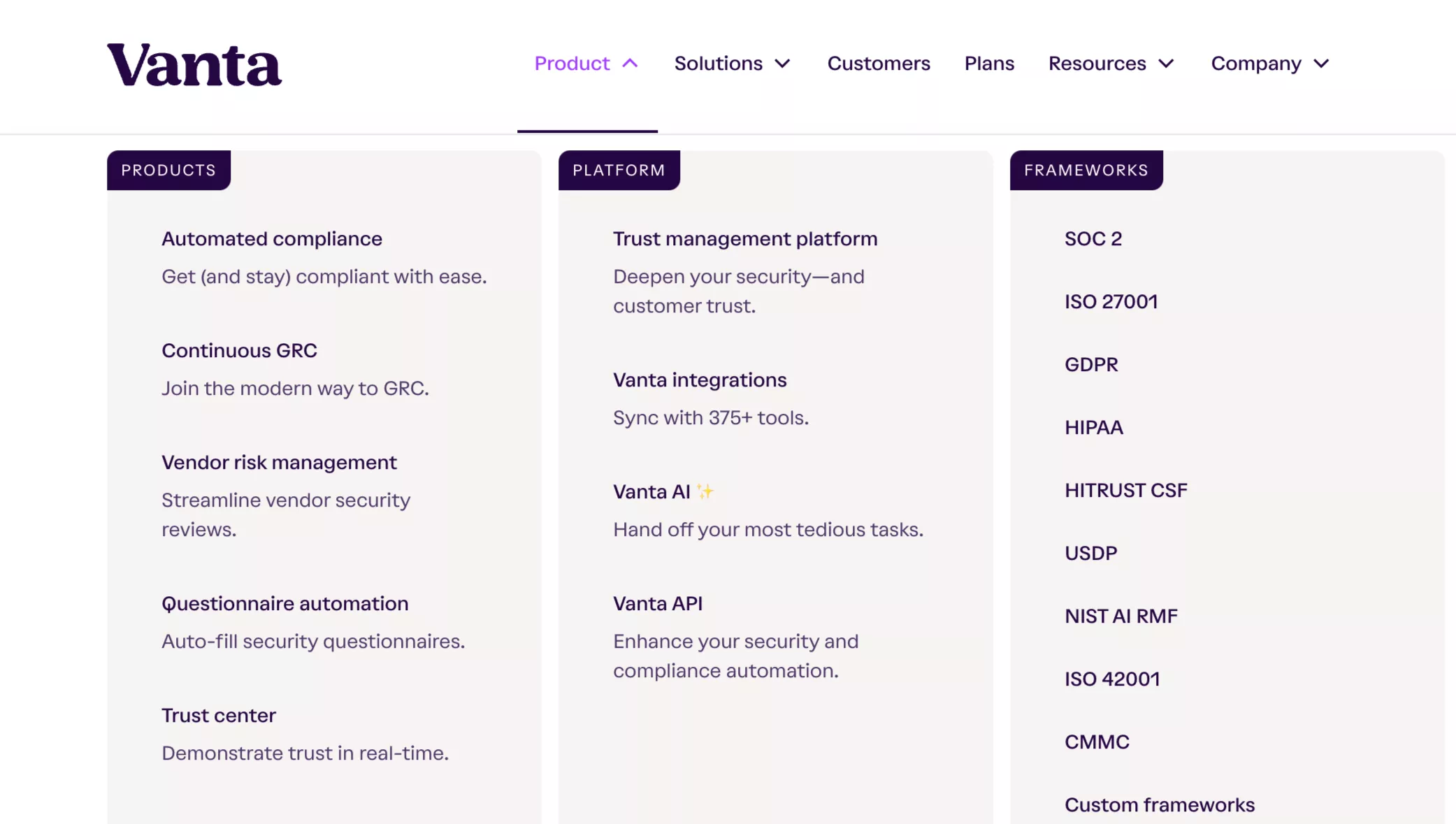by Venchito Tampon Jr | Last Updated on February 17, 2025
If you plan to rank your cybersecurity firm for your target commercial keywords, you’ll have to compete with search giants like Cisco, Palo Alto Networks, and McAfee.
These big brands have dominated the search market for cybersecurity-related keywords. So, targeting head terms that receive thousands of searches may not be the best strategy, especially if you’re new to SEO.
That’s not to say you can’t outhustle the big guys, but you should create and execute a solid SEO campaign to climb Google’s search results for topics where you’ll have an advantage and can make a wider content gap or link profile gaps.
What is Cybersecurity SEO?
Cybersecurity SEO is the process of optimizing a cybersecurity website and its commercial pages to get visibility on search engines while balancing technical accuracy, compliance, and brand authority with its blog content to attract more top-of-the-funnel content suited for audiences like Chief Information Security Officers (CISOs), IT Directors and Managers, Risk Management Officers, and Compliance Officers.
SEO Strategies For Cybersecurity Websites
Let’s walk through how you can execute this. It’s really not different from a typical SEO campaign. Most fundamentals will help, but cybersecurity needs nuance or a new flavor.
Implement Technical SEO
In our experience, cybersecurity websites typically have the following technical SEO issues to monitor and fix regularly:
Overly Strict Security Measures Blocking Crawlers
The most secured websites must come from cybersecurity. After all, it’s what they’re good at providing for their clients.
However, we’ve found interestingly that overly strict security measures, with a lack of understanding of SEO, can prevent them from having their web pages crawled and indexed by Google.
Firewalls, bot protection, and DDoS mitigation tools (e.g., Cloudflare) may accidentally block search engine crawlers from crawling the website, especially if misconfigured, preventing the indexing of important webpages.
The best course of action would be these three:
- Whitelist Googlebot, Bingbot, and other legitimate crawlers in firewall and security settings.
- Ensure the robots.txt file does not unintentionally block important pages (e.g. Disallow: /blog/)
- Use server logs to identify if security tools are mistakenly blocking search engines.
Excessive JavaScript Use in Security Features
Some cybersecurity websites rely heavily on JavaScript-based authentication and encryption, which makes critical content unreadable to search engines. CAPTCHA and login-based access to key resources can also limit indexation.
Many cybersecurity websites use excessive security scripts, tracking codes, and redundant plugins, leading to bloated code that slows down page load times.
Essential actions to take:
- Use server-side rendering (SSR) or dynamic rendering to ensure JavaScript content is indexable.
- Implement progressive enhancement so critical content loads first without JavaScript dependencies.
- Test pages using Google’s Mobile-Friendly and Rich Results Test to ensure visibility.
- Reduce reliance on CAPTCHA for SEO-relevant pages and provide bot-friendly alternatives.
Frequent 403 and 404 Errors Due to Content Restrictions
Strict access control measures can result in 403 (forbidden) errors, affecting crawlability. You would also notice broken links and 404 errors from expired threat intelligence reports or removed security advisories.
Depending on why the URL is giving off the 404 status, 404s can be corrected by bringing back the live web page via redirection or by doing nothing with 404 status.
Poor URL Structure Due to Compliance Needs
Many cybersecurity firms rely on dynamic URLs with query parameters as they require most of their website initiatives to adhere to compliance, security protocols, or content access restrictions. This results in URLs like:
example.com/service?id=1234®ion=us&compliance=iso27001example.com/article.php?post=5678&category=cybersecurity
These poorly optimized structures can cause indexation issues, duplicate content, and difficulty tracking in the analytics tools.
You might also find obfuscated URLs for security reasons, which make them less user-friendly and harder for search engines to understand.
Certain pages behind login restrictions or access control mechanisms (e.g., requiring authentication to view security reports) might not be indexed.
What to do with these? Here’s your quick how-tos:
- Use SEO-friendly, static URLs instead of dynamically generated ones (e.g., /cybersecurity-services/ instead of /service?id=1234). If you discover appropriate keywords to target, optimize the URL structure with the target keyword—it’s one of the first things search engines look at when trying to rank a relevant webpage.
- Keep URLs descriptive and short, avoiding unnecessary query parameters.
- Implement canonical tags to prevent duplicate content issues from compliance-based variations.
- Regularly audit URLs and use 301 redirects for outdated or non-compliant structures.
Schema Markup
Cybersecurity firms often overlook structured data markup, which is one of the intermediate SEO techniques that search engines use to recognize a firm’s credibility and expertise.
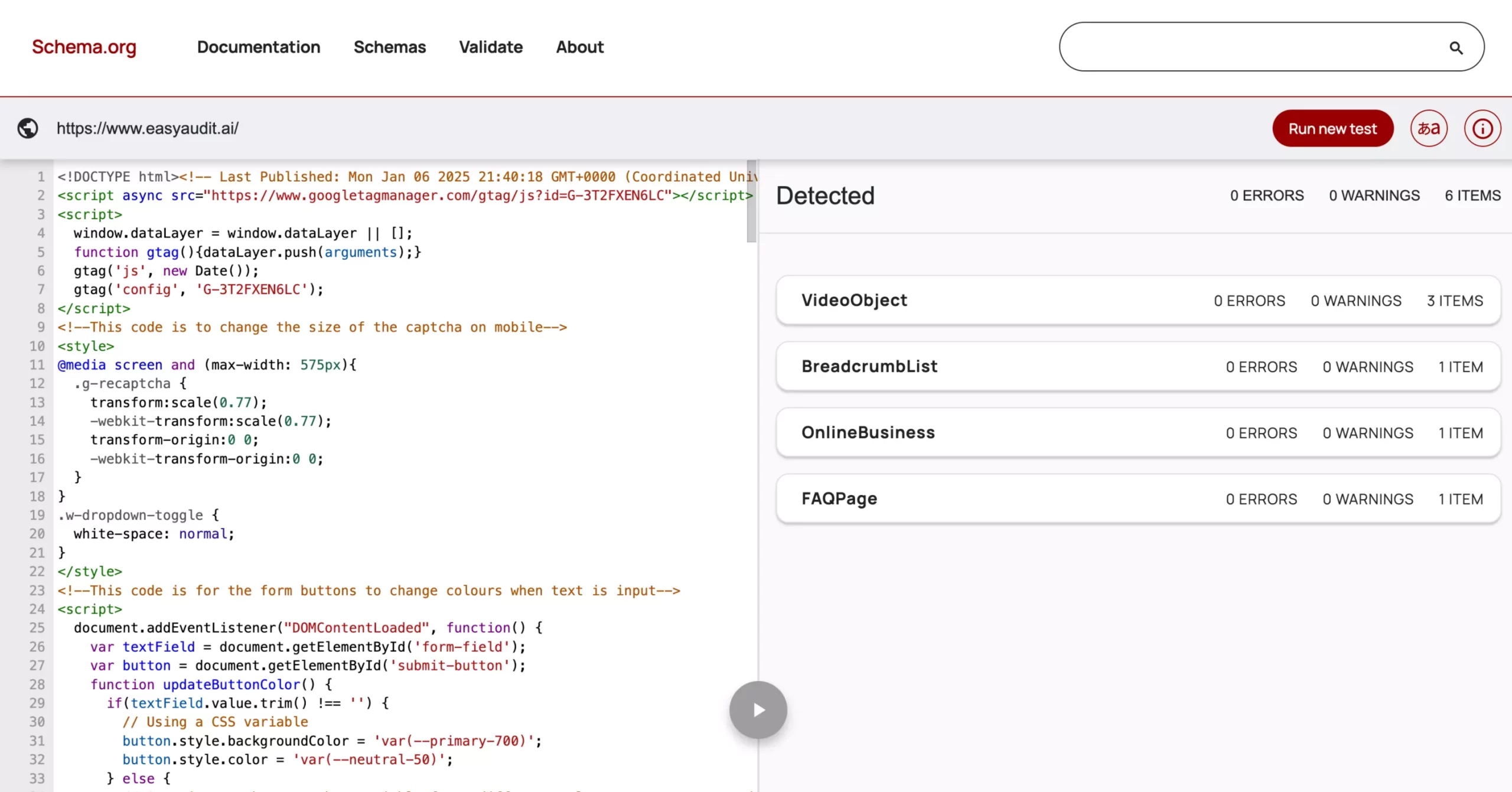
Here are a couple of resources to help you with implementing schema markup in your cybersecurity website:
Map Content to Buyers’ Journey of Your ICPs
Learning how to map out a content marketing plan to target your individual ideal customer profiles can help you craft content assets that are specific to your target audience’s needs, pain points, and how-to desires.
This is apparent for cybersecurity buyers with different technical expertise, priorities, and purchasing behaviors.
For instance, there are distinct concerns between a CISO at a multinational corporation and an IT Manager at a mid-sized company. The former is a high-decision maker who based his action plans on how particular cybersecurity measures can help the company’s business objectives, while the IT managers’ major concern is looking for an ideal cybersecurity solution to be presented to their upper management in their organization.
Most cybersecurity firms don’t have clear ICP, as most doing the in-house SEO work aren’t adept at fundamental marketing principles, leading to many misaligned content assets they produce on their websites—either too technical for decision-makers or too simplified for hardcore IT professionals.
The best way to make sure your content hits home to your potential buyers is by segmenting content based on how it speaks to:
Define ICP and understand their top priorities, pain points, and what cybersecurity is for them. Here’s what it looks like:
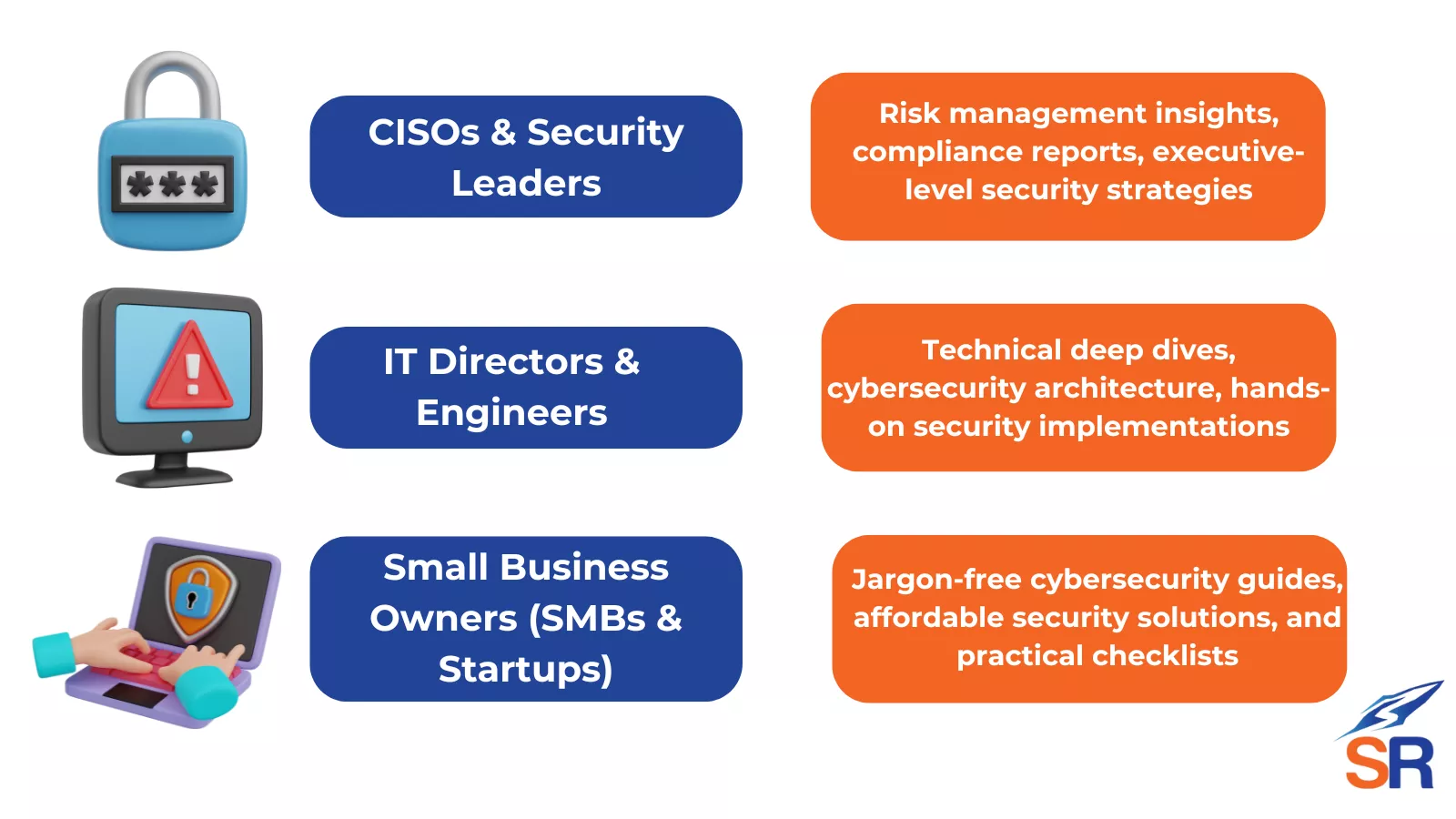 CISOs & Security Leaders → Risk management insights, compliance reports, executive-level security strategies
CISOs & Security Leaders → Risk management insights, compliance reports, executive-level security strategies
These high-level decision-makers need strategic content that helps them assess risks, align security with business goals, and ensure regulatory compliance. The key factors are business numbers and social proof.
Show your cybersecurity solution can help them achieve growth in their business numbers based on specific metrics related to their performance.
Example: “How Zero-Trust Security Reduces Enterprise Risk” (high-level strategy guide).
IT Directors & Engineers → Technical deep dives, cybersecurity architecture, hands-on security implementations
If you’re targeting mid-level management people, create in-depth, technical content that explains security frameworks, configurations, and implementation details. Talk about long-form actionable guides addressing daily challenges, from minor issues they couldn’t solve to higher strategy work they must present to their superiors.
Example: “Configuring Firewalls for Ransomware Prevention” (detailed technical guide).
Small Business Owners (SMBs & Startups) → Jargon-free cybersecurity guides, affordable security solutions, and practical checklists
You don’t need to publish overly technical guides here. It is best to ideate and create simple, actionable content that helps them understand security essentials without technical complexity.
Small business owners care more about how it helps them achieve their business goals (profit, growth, operations, delivery, etc.). Think of the many functions of a business owner where your cybersecurity solution can best fit.
Example: “Cybersecurity Basics for Small Businesses: 5 Ways to Secure Your Data” (step-by-step guide).
Related Resource: 21 Content Marketing Tips for 2025
Create Dedicated Landing Pages to Target Individual Keywords (1:1 Approach)
The most common mistake in basic SEO, and often a challenge for my SEO work for cybersecurity websites, is not targeting individual keywords for their landing pages.
In order to rank for your target keywords, your domain must have a dedicated webpage that talks directly about the keyword. The absence of it makes SEOs wonder why their cybersecurity websites don’t even appear on pages 2 to 4, let alone on page 1 of Google’s SERPs.
To maximize your SEO efforts, you can tap into topic clustering (others call it a topical map strategy).
Build Parent Pages + Topic Clusters for Better Structure & SEO
Instead of standalone pages, create a hierarchical structure (parent + child pages) for cybersecurity services that signal to Google what your website is about, specific to the commercial keywords you’re vying for.
Doing so helps your search engines crawl your web pages better, improving crawl efficiency. It also helps your users navigate your website seamlessly, as they can see exactly which pages they should visit based on a logical site architecture and smart internal linking system.
Here’s what the topic clustering strategy looks like for cybersecurity firms:
Parent Page: /services/cybersecurity-solutions/ (Broad Overview)
- H1: “Comprehensive Cybersecurity Solutions for Businesses”
- Provides a general overview of all services offered.
- Includes internal links to more specific service pages.
Child Pages (Topic Clusters for Each Service):
/services/cloud-security-enterprise/→ Cloud Security
Covers AWS, Azure, Google Cloud security, and compliance./services/penetration-testing/→ Penetration Testing
Explains external/internal pen testing, vulnerability assessments./services/managed-firewall-smbs/→ Managed Firewall Services
Details SMB network security, firewall monitoring, and maintenance./services/incident-response/→ Incident Response
Covers breach recovery, forensics, and cyberattack mitigation./services/ransomware-protection/→ Ransomware Protection
Focuses on threat detection, encryption, and endpoint security.
Customize head term targeting, service pages, and their target keywords based on your firm’s service offerings.
The above strategy is worthwhile and should be helpful enough to give you a headstart.
Industry-Specific Cybersecurity Service Pages for Better Targeting
If there’s an advanced-level SEO strategy that could be implemented well for cybersecurity firms, it is the ability to publish industry-specific cybersecurity service pages to cast a wide net in brand reach and capture more organic traffic from potential buyers in different markets.
The best thing about cybersecurity SEO campaigns is their wide variety of potential customers or clients, as compliance requirements, security risks, and all its related solutions are applicable in many companies. That itself is a good opportunity to leverage targeting a variety of industries.
Examples of Industry-Specific Cybersecurity Pages:
- “Cybersecurity for Healthcare: HIPAA Compliance & Data Protection” →
/industries/healthcare-cybersecurity/ - “Cybersecurity for Financial Services: Preventing Bank Data Breaches” →
/industries/financial-services-cybersecurity/ - “Cybersecurity Solutions for E-Commerce: Payment Security & Fraud Prevention” →
/industries/ecommerce-cybersecurity/ - “Cybersecurity for SaaS: Secure DevOps & Data Encryption” →
/industries/saas-cybersecurity/
My best recommendation is to craft content for each landing page that is tailored to the pain points, solutions, and messaging of each industry.
One of the most common mistakes, when they use this strategy, is simply rewriting one industry page, creating almost similar (nearing duplicate content) that’s often hurting their website rankings instead of helping it.
Hire copywriters and content specialists to work on these different industry pages and optimize them for the industry keyword—at best, if you do it comprehensively (long-form, more information, in-depth). You don’t have any reason not to rank for your target keywords.
EEAT Is No Longer a Nice-To-Have — It’s a Must
Google favors brands in many cyber-security keywords (like in any other industry), where demonstrating E-E-A-T (Experience, Expertise, Authoritativeness, and Trustworthiness) is no longer just a part of your SEO checklist but a necessary SEO initiative.
Here are a couple of actions to ensure you display these brand factors on your website.
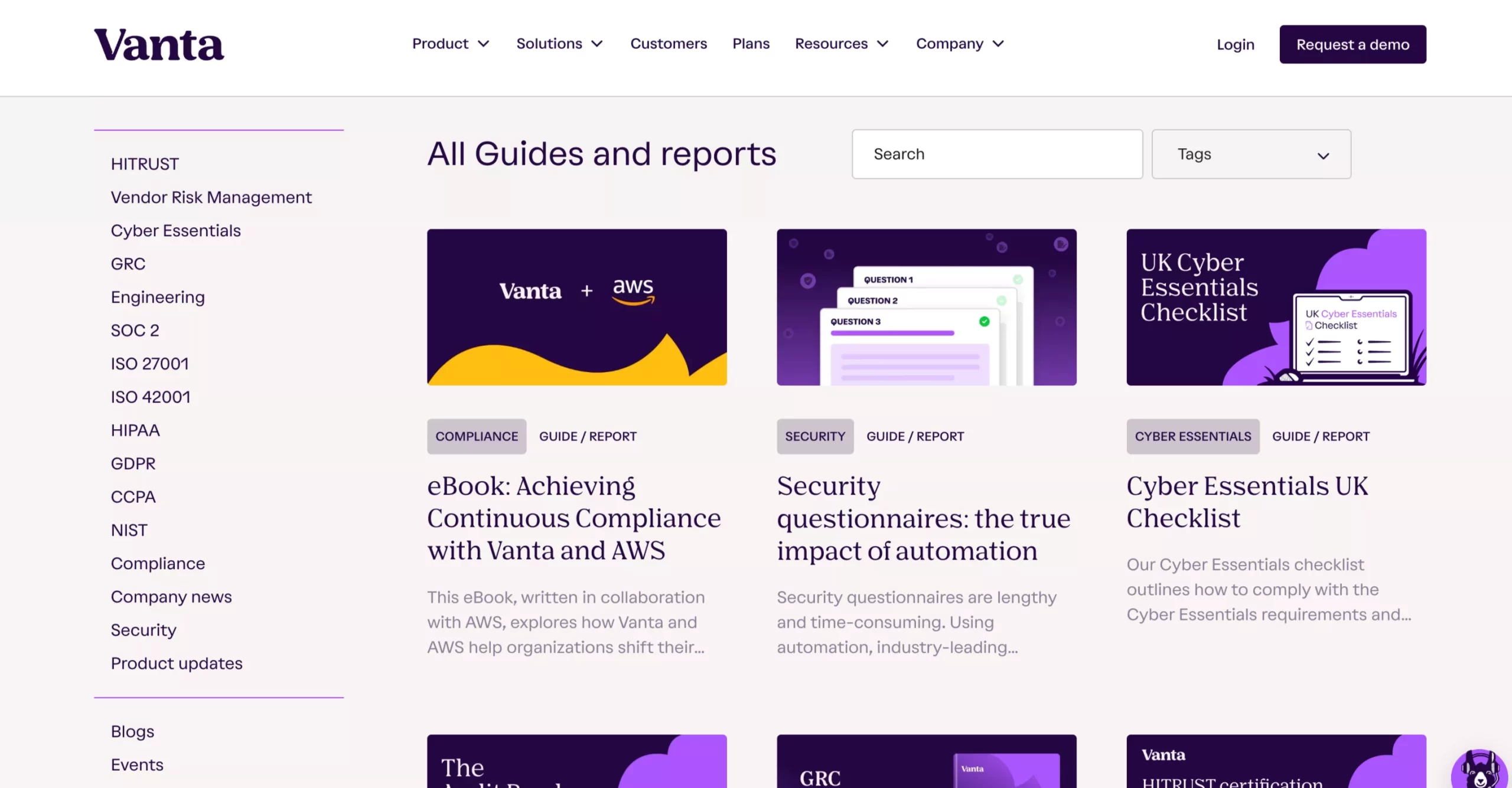
Publish thought-leadership content assets
As mentioned earlier, you’re dealing with highly educated readers in the cybersecurity space. Authors who display a level of experience are essential to ensuring the caliber of content displayed on webpages.
Release threat intelligence reports, security trends, breach analysis, and share data-driven insights about emerging cybersecurity threats. When writing content, include entities— cite government, security organs, and research institutions (e.g., NIST, CISA, MITRE ATT&CK).
Create author bio pages for each of your organization’s in-house experts (e.g., CISSP, CEH, CISM holders). Include educational background, professional achievements, affiliations, and organization each expert has been part of or affiliated with.
By demonstrating enough credibility of their individual expertise, they send rich signals to Google that your website is topical and relevant to a given subject discourse.
Include First-Hand Insights in Blog Content
This won’t be a difficult task for your content team, as most can interview in-house leaders in your organization. They can share lessons, actionable insights, and industry trends that they observe or have credible opinions about—all displaying author expertise for your website.
Display Trust Badges
Trust badges are a small overlooked trust factor, which cybersecurity firms can take advantage of in sending more trust signals to search engines and users.
SEO teams can display ISO 27001, SOC 2, GDPR, and NIST compliance – and other related trust budgets on their websites’ landing pages.
Strengthen Authority with High-Quality Backlinks
The best thing is that once you have covered the basics of SEO, if done right, you’ll get significant rankings for your webpages. But if you want to aim for three positions on Google’s SERPs, it’s inevitable that you will build high-quality backlinks.
However, beware of the many link vendors and “middle-man” link builders who only get backlinks from lower-traffic multi-category websites. While it’s easy to pay them peanuts, you’re likely to end up with your website penalized or unable to rank on the first page of SERPs as they don’t contribute any link equity to your website.
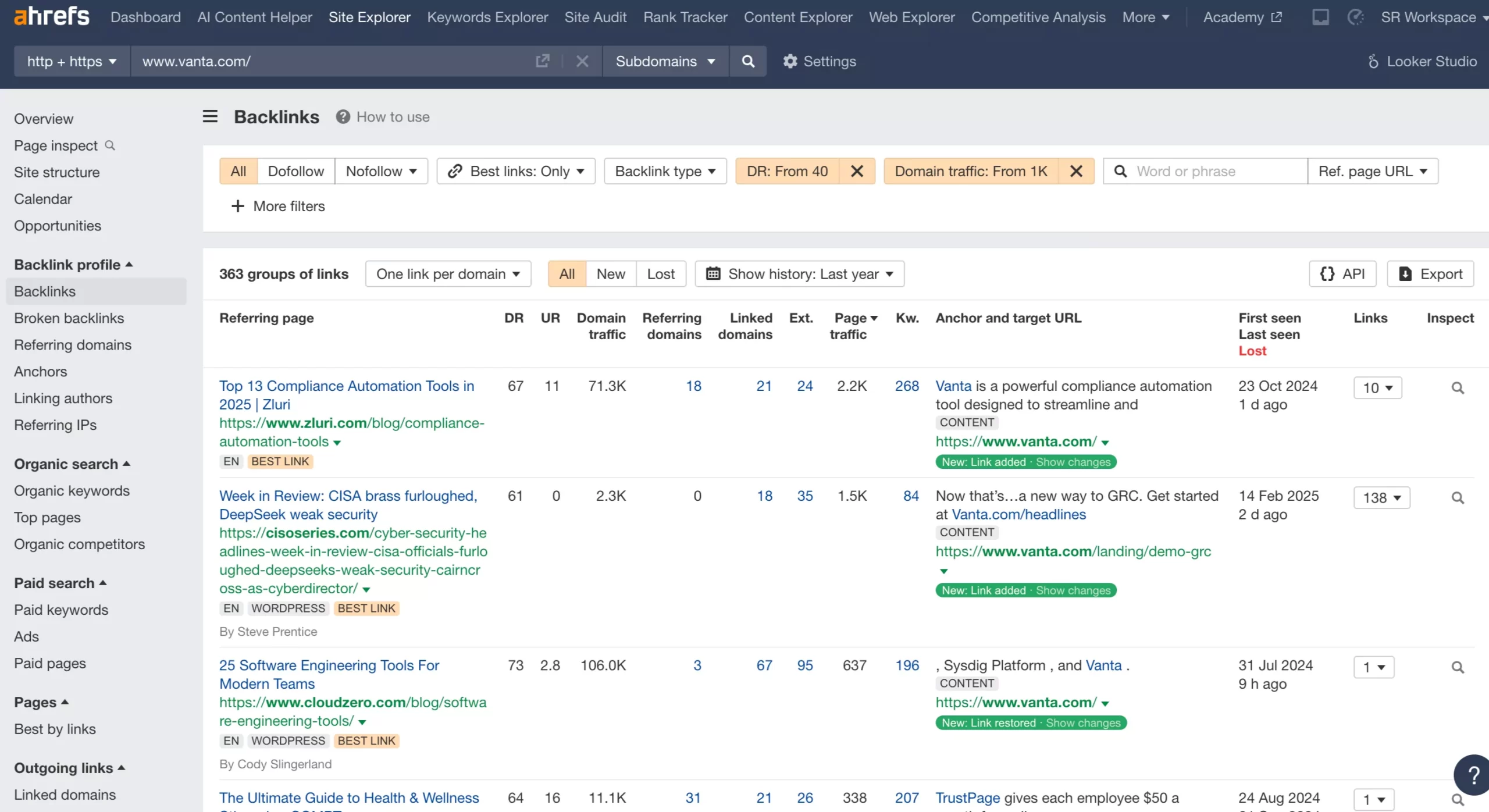
If you’re just getting started in link building, it’s not that easy to get featured in cybersecurity news sites like Dark Reading ThreatPost and KrebsOnSecurity or even tech-focused sites (e.g., TechCrunch, Wired, or SC Media).
The best way is to launch a digital PR campaign where it helps build thought leadership of your brand through expert commentaries, data-driven campaigns, and reactive PR, while getting high-quality editorial links to your cybersecurity website.
Here are a couple of guides we’ve written to help you launch your link building campaigns:
SharpRocket—Agency of Choice For Cybersecurity Firms
Whether you want to execute full-scale SEO campaigns or ramp up your landing pages with high-quality backlinks, we cover everything you need to increase your organic traffic. Book a call with us today, and we’ll create a cybersecurity SEO roadmap for you.
The Author
Venchito Tampon Jr
Venchito Tampon is a Filipino Motivational Speaker, Corporate Trainer, and a Leadership Speaker in the Philippines. He is the CEO and Co-Founder of SharpRocket, a link building agency. With a decade of experience, Venchito has a proven track record of leading hundreds of successful SEO (link builidng) campaigns across competitive industries like finance, B2B, legal, and SaaS. His expert advice as a link building expert has been featured in renowned publications such as Semrush, Ahrefs, Huffington Post and Forbes. He is also an international SEO spoken and has delivered talks in SEO Zraz, Asia Pacific Affiliate Summit in Singapore, and Search Marketing Summit in Sydney, Australia. Check out his other businesses, Hills & Valleys Cafe, Blend N Sips and Saas Pursuit.
How our LINK BUILDING AGENCY builds 250 links/mo consistently using Predictable Link Building Methodology™…
- Using a SIMPLE and PROVEN system
- Using a SCALABLE strategy
- No private blog networks
- No creepy outreach emails
